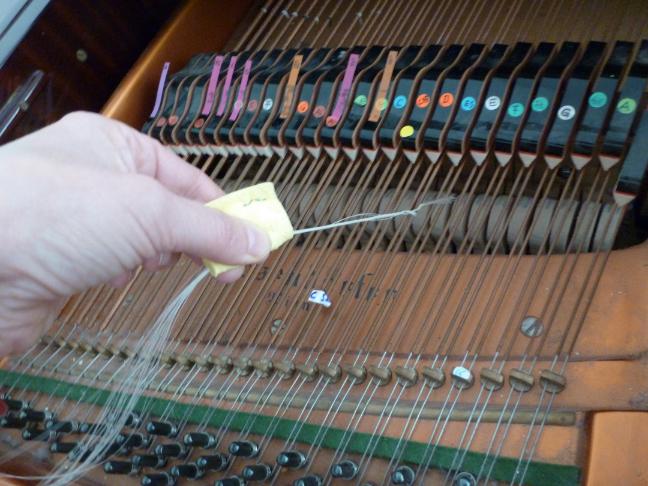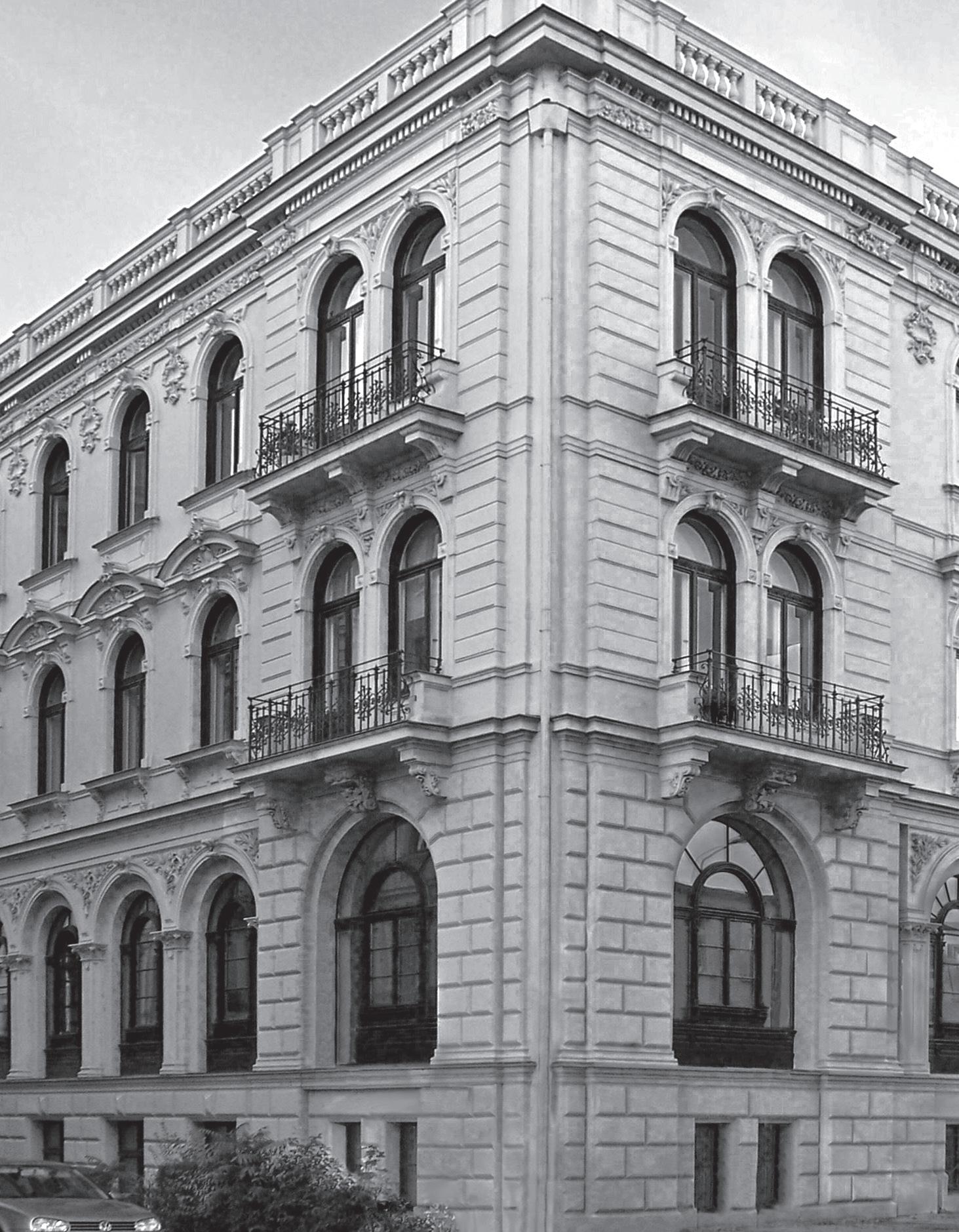BAUCKHOLT
Treibstoff for Ensemble Full Score


Treibstoff for Ensemble Full Score

for Flute (doubling Bass Flute), Clarinet in B-, Violin, Viola, Violoncello, Double Bass, Percussion and Piano
Full Score
LEIP ZI G · L ONDO N · NE W YOR K
CarolaBauckholt
Treibstoff
forflute(doublingbassflute),clarinetinB-flat,violin,viola,cello,doublebass,percussionandpiano
1995
CommissionedbyDresdenerZentrumfürzeitgenössischeMusik DedicatedtotheThürmchenEnsemble(NormisaPereiradaSilva,DiegoMontes,ClemensMerkel,EllenRuthRose, CasparJohannesWalter,MiriamShalinsky,ThomasMeixner,DorotheaEppendorfandRolandKluttig)
Instrumentation
Flute(alsoBassFlute)
ClarinetinBb
Violin
Viola
Violoncello
DoubleBass
Percussion
Piano
ThescoreiswritteninC.
Legend
General
Quartertonelower
Quartertonehigher
Beginningofacrescendoorendingofadecrescendoinaudible(from/toniente)
Energyputintothegesture,nottheresultingdynamic
Winds
Airnoise
Airnoisewithfluttertongue
Slaptongue
Tongueram–quicklyclosetheembouchurebyrammingthetongueagainsttheaperturetherebyproducingapizzicatolikesound.
Fortheflutetheresultingpitchisaseventhlowerthanthenotefingered.
Multiphonicintheindicatedregister
Breatheinthroughtheflutekeepingthevocalchordsrelaxed,thusallowingthevocalchordstovibratealongwiththeinhalation.
“frog”Thegivenpitchesarefingered,althoughtheyhavelittleeffectonthesoundresult.Withthis,a“vocalfry”(alooseglottalclosurethatpermitsairto bubblethroughslowlywitharattlingsound)issunginthemouthpiece,whichiscoveredbythemouth,inadeeprelaxedregisterwithanupward glissandoattheend.AnAmericanRisformedfollowedbyagentletransitiontoan“eh”toimitatethesoundofafrog.
Keyclickwithtonguepizzicato,veryaccented.Thisnotationindicatesthefollowingfingerings: Clarinet–suckonacornerofthereed(kissnoise).
Thesoundswiththemoutharenotatedaccordingtothephoneticalphabet.
Forthebeginningofthepiecethefourinstrumentsarepreparedwithasmallpieceofcork.Thepieceofcorkshouldbeabout4mm(slightlylargerforthe doublebass).Thepieceofcorkshouldbeplacedbetweenthebridgeandfingerboard(nearertothefingerboard)betweenthefollowingstrings: Violin–III+II;Viola–III+II;Violoncello–III+II;DoubleBass–II+I

Bártokpizzicato–stringshouldreboundagainstthefingerboard. Fingerpercussion–lefthandalone“hammeredon”. pizz.banjo–hardpizzicato;nearthefingerboardwithahugevibrato,perhapswithfingernail. Ashighaspossible.Stringshouldbestoppedrightnexttothebowhairsulponticello(brightandintensesound).
Withoutupordownbowmotion,movethebowverticallyalongthestringinthedirectionofthepegboxandback.
Withthebacksideofthefrog(Violoncello–bowheldvertically)pushthestringdownandthenletgo,thisshouldbeasaccentedaspossible. Violinscoulddoitwiththebowscreworcollegno.Doublebasswiththemetalofthefrog. “bouncing”–Placethebowonthepointonthestringwherethegivenpitchwouldbefingered.Thepitchdeterminesthecontactpointofthebow onthestring.Bowatthefrogwithalotofrosinandrelativelyextremebowpressure,usingaslittlebowaspossible.Mutethestringwiththefinger ca.1cmbehindthebowhairandliftitabovethebowtomakebowingeasier.Slowsingleattacks–averyresonate,sparklingimpulseshouldresult. Glissandotothefinaltoneinparenthesis,whichisn’tplayedbutonlyreached.
Quicklywipealongaflutedstringwithfingernailsofthumbandforefinger.
Percussion
Smallsuperballonbongo
Bongo
Shallowwatercontainer,withasmalllid(e.g.asmallmilkcan).Splashonthesurfaceofthewater. 2differentinstrumentswithanimalskindrumheads(fingertipssounds,scratchingnoises)
Woodblock,tunedto
2Crotales–Lion’sroar
Scrapcymbal–anoldbrokencymbalwithashrillbrokensound,butsecco 4tincanswithvariouspitches
Styrofoam–twodistinguishableswishingsoundsofdifferentbrightness(nosqueaks)madebymovingthestyrofoamalongonalargeround woodenpanel(lotsof“bow”).
Woodenpanel–lotsof“bow”.
Flowingwater–waterfromacontainerwithafinespout(e.g.ascrewtopglasswithaholeinthecap),pouredfromalargedistanceintoabowl (asmuchaspossibleinplainview).
Superballonawoodenresonancecase
Guero
Deepwoodsounde.g.africanwoodeninstrumentwithlotsofresonance
SmallbrightTempleblock
Nylon–Thetypeofnylonthatbagsofsleeping-bagsorbackpacksaremadefrom.Oryoutakethe nylon,putitonflatcardboard(forresonance)andmakearolloutofit.Drawaplectrumquickly andlightlyacrossthesurfacegivingaclearbrightsound.Thegestureisasifwipingsomethingaway. Plop–dropapotatointoabucketofwater

–stickfoamrubberpiecesca.1cmbeforetheendofthestringgivingwoodblock-likesound. MoreeasytohandleisPatafix®gluepad(orsimilaradhesive,usedtomountphotos).


Preparationof–sticktworivetsbetweenthestringsgivingagong-likesoundwithbeats


ca.8bowhairs(usedhairsofabow)tiedtogetherandthreadedunderthestring

knotseveralrosinedbowhairsaroundthetwostrings.Holdingthefreeendofthebowhairsveryloosely,rubthehairswitharosined spongecloth.WithPedal!Theresultshouldbeveryloudsoundinglikealion’sroar.






heavypercussionmallet withplectrum

Withasmallpieceofstyrofoam(dippedinwater),wipeverylightlyoverthepianolid;theresultshouldbeafleeting brightnoise,andlesssqueak-like.
(splashingshouldbe distinctlyaudible)
playnotexactlytogether,asiflaggingbehind,withoutpedal
afteralongrest,repeatwithirregularlyinserted variationsof16thnotesandquintuplets
gliss.over2mm,i.eduringtherepetitioncontinueshigher
wipewithfingernailalongthestring, lightly,brightovertones

For more than 200 years, Edition Peters has been synonymous with excellence in classical music publishing. Established in 1800 with the keyboard works of J. S. Bach, by 1802 the company had acquired Beethoven’s First Symphony. In the years following, an active publishing policy enabled the company to expand its catalogue with new works by composers such as Brahms, Grieg and Liszt, followed in the 20th century by Richard Strauss, Arnold Schoenberg and John Cage.
Today, with its offices in Leipzig, London and New York publishing the work of living composers from around the world, Edition Peters maintains its role as a champion of new music. At the same time, the company’s historic and educational catalogues continue to be developed with awardwinning critical and pedagogical editions.
Seit über 200 Jahren steht die Edition Peters für höchste Qualität im Bereich klassischer Notenausgaben. Gegründet im Jahr 1800, begann der Verlag seine Tätigkeit mit der Herausgabe von Bachs Musik für Tasteninstrumente. Schon 1802 kamen die Rechte an Beethovens erster Sinfonie hinzu. In der Folgezeit wuchs der Katalog um neue Werke von Komponisten wie Brahms, Grieg und Liszt sowie – im 20. Jahrhundert – Richard Strauss, Arnold Schönberg und John Cage.
Als Verleger zahlreicher zeitgenössischer Komponisten aus aller Welt ist die Edition Peters mit ihren Standorten Leipzig, London und New York auch weiterhin Anwalt neuer Musik. Zugleich wird das Verlagsprogramm im klassischen wie im pädagogischen Bereich kontinuierlich durch vielfach preisgekrönte Ausgaben erweitert.